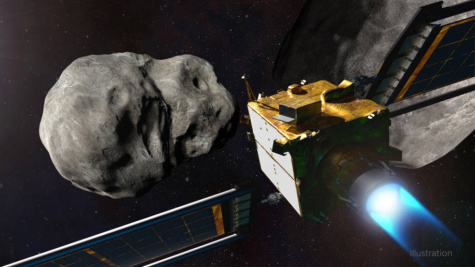
Otto Schniepp | Writer
September 30th, 2022
We have done it. We made a new, yet primitive, way to get revenge for the dinosaurs and protect Earth.
The DART.
The DART is a satellite that was launched by NASA in November of 2021. DART stands for Double Asteroid Redirection Test. This satellite was made to kamikaze itself into asteroids, deflecting them away from our great planet Earth.
The obvious achievements of this satellite are plain and clear; because of it, we are able to redirect asteroids with satellites so they are not a threat to Earth. However, some of the non-obvious achievements require some deeper thought in order to comprehend. Launching this satellite was no easy task, and used parts from other companies and countries. This monster of a task forced their hand to help each other in this endeavor to see if this was a viable strategy for protection.

People around the world are happy about the DART, but there are also people around our campus excited about it, too. Before the launch started, junior Joey Behninga said things like “Dude the DART is on track” or “hey the DART is getting closer and closer to the asteroid.” He also kept texting me over and over again about the launch and how revolutionary it was for science as a whole. When the satellite was about to make an impact, my friend, junior Alana Clavijo, forced me to watch the live stream.
Junior Adam Carpenter stated, “I think NASA’s DART is pretty cool.” It is pretty cool Adam. It shows how we can redirect an asteroid half a mile in diameter with a satellite smaller than a vending machine.

Leave a Reply